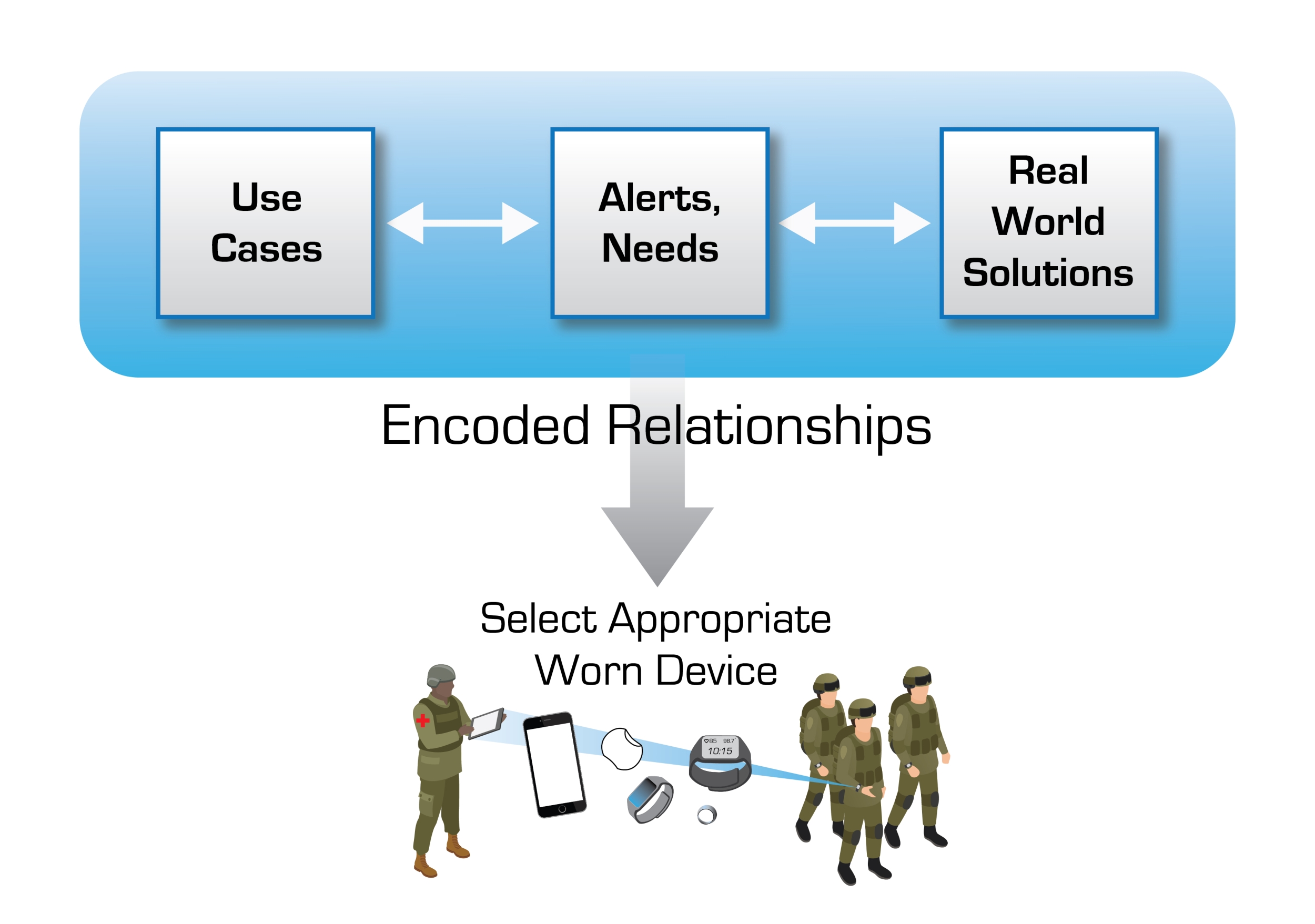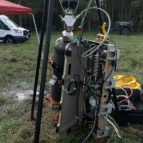Model-Based Systems Engineering Analysis
The rapid advancement of wearable sensing, artificial intelligence, and real-time data streaming technologies provides an unprecedented opportunity to gather information about the inner workings of the human body and mind. For the military, these technologies could help improve mission effectiveness by enabling warfighters to monitor their physiological and cognitive performance.
However, it is a complex task to assure that evidence-based science and wearable technology development converge to meet military performance and health monitoring requirements. To address this challenge, we have developed a Model-Based Systems Engineering (MBSE) architecture and methodology for validating commercial- and government-developed wearable systems and technologies against military training and operational needs.
The MBSE systems architecture is built in a database-like software program that helps military leadership match military strategic source requirements, priorities, and use cases with solutions that encompass human health and performance wearable systems, algorithms, metrics, and technologies. For example, military leadership could indicate that warfighters will be doing physical tasks in a hot environment. The MBSE tool would then identify heat stress as an important physiological state to monitor in order to prevent heat injury, and display which wearable systems monitor core temperature and provide heat stress alerts. The tool can also identify gaps in monitoring capabilities that military leaders deem critical to assessing warfighter readiness (i.e., no wearable systems exist that meet the use case needs).

Currently, we are expanding the MBSE tool’s solution libraries and use cases, as well as adding detailed design and interface information to further enable model-based analyses among the wearable systems. This expansion will extend the tool’s ability to select and integrate the right set of systems for the user’s needs (e.g., the model will select only those wearable systems that have a minimum 10-day battery life for a use case that requires a 10-day mission with limited device charging opportunities), as well as identify capability gaps.
While we continue to improve the tool, the military’s science and technology and advanced development communities are using the current version to identify technologies that will be transitioned to warfighters in training and combat missions. By providing a dynamic and consistent representation of human health and performance systems and end-user needs, the MBSE systems architecture will help to evaluate the vast technological landscape and fulfill the promise of human health and performance systems in the military environment.


